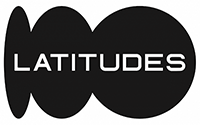The glorious past, Revisiting Museutopia
Store Review (0)PRESENTED BY : Nel
| Frame | None |
|---|---|
| Medium | Digital Print on Canvas |
| Location | Cape Town, South Africa |
| Height | 181.00 cm |
| Width | 373.00 cm |
| Artist | Ilya Rabinovich |
| Year | 2024 |
This triptych is composed of two parts. On the sides is a photo I took at The National Museum of Archaeology and History in Chisinau (2009), and in the middle is a photograph I took at the History of the IDF Museum, which was dismantled in 2019. It was the largest military museum in Israel, established on an army base in Tel Aviv in 1988. Initially, it exhibited a trophy weapons collection right after the end of the First Israel-Lebanon War and later expanded to house an immense weapons collection of more than 4,000 items.
What was striking about the IDF Museum in Tel Aviv was that, despite being the largest of its time, it was not designed by professional exhibition designers and lacked a clear vision of its mission statement and visual language. It was divided into 16 thematic pavilions, roughly corresponding to the various branches of the land forces (the Air Force and the Navy have their own separate museums elsewhere). A large section was dedicated to trophy weapons taken from Arab armies, along with a pavilion specifically for weapons captured from Palestinian organizations.
The two mannequins wearing representative uniforms were displayed in the Israeli chain of supply pavilion at the former IDF Museum. They were dressed in official representative IDF uniforms, including those worn exclusively by high-ranking generals in official state ceremonies. However, a close look at the mannequins—purchased from fashion shops located in the same neighborhood in southern Tel Aviv—reveals a lack of attention to detail and the difficulty of preserving them, as they tended to peel and crack over the years.
The National Museum of Archaeology and History in Chisinau was situated in a historic building constructed in the 17th century in an Italian style. It was originally established as a school for boys by Czar Peter, as Moldova was part of the Russian Empire at the time. The building was renovated in the early 1980s and was initially intended to house a military museum dedicated to the Red Army. However, in a last-minute change of plans, after the building had already been renovated and fitted with massive metal frames meant to display army-related banners, it was converted into a history museum in 1983.
When I first came to photograph there, I couldn’t believe what I was seeing, because it was obvious that the metal frames did not belong to the exhibitions on display. When artifacts were exhibited, they were hung with fishing ropes attached to these frames. When I asked how this could be, I was told that removing or dismantling the metal frames would mean demolishing the interior walls, and the museum lacked the funds for such an operation. So, even though Moldova had already been independent for 30 years at that point, the communist past continued to haunt the museum through the presence of these empty frames.
The exhibition in the photograph, Life in Moldova in the 1980s, was intended to depict Moldovan technological progress by displaying home appliances—most of which were inaccessible to the majority of the population at the time.














